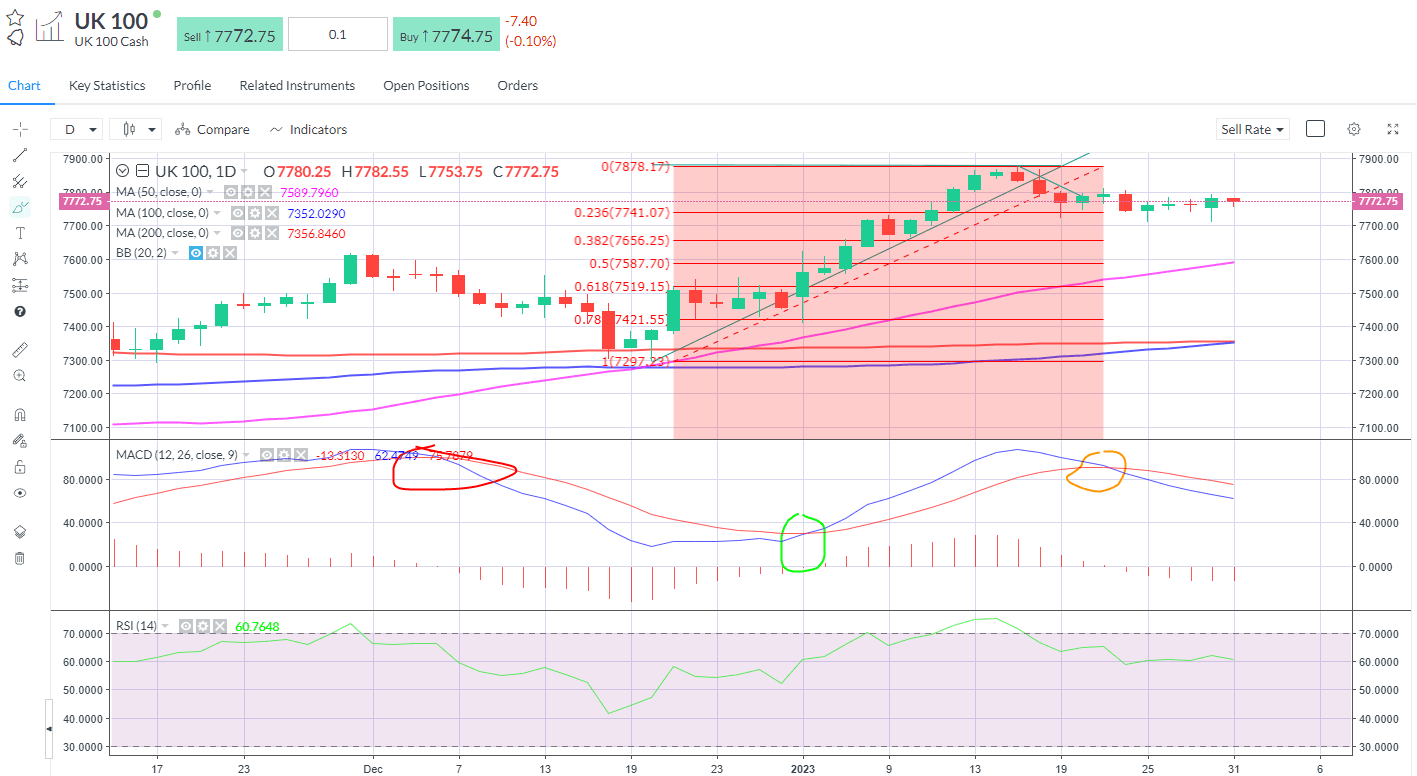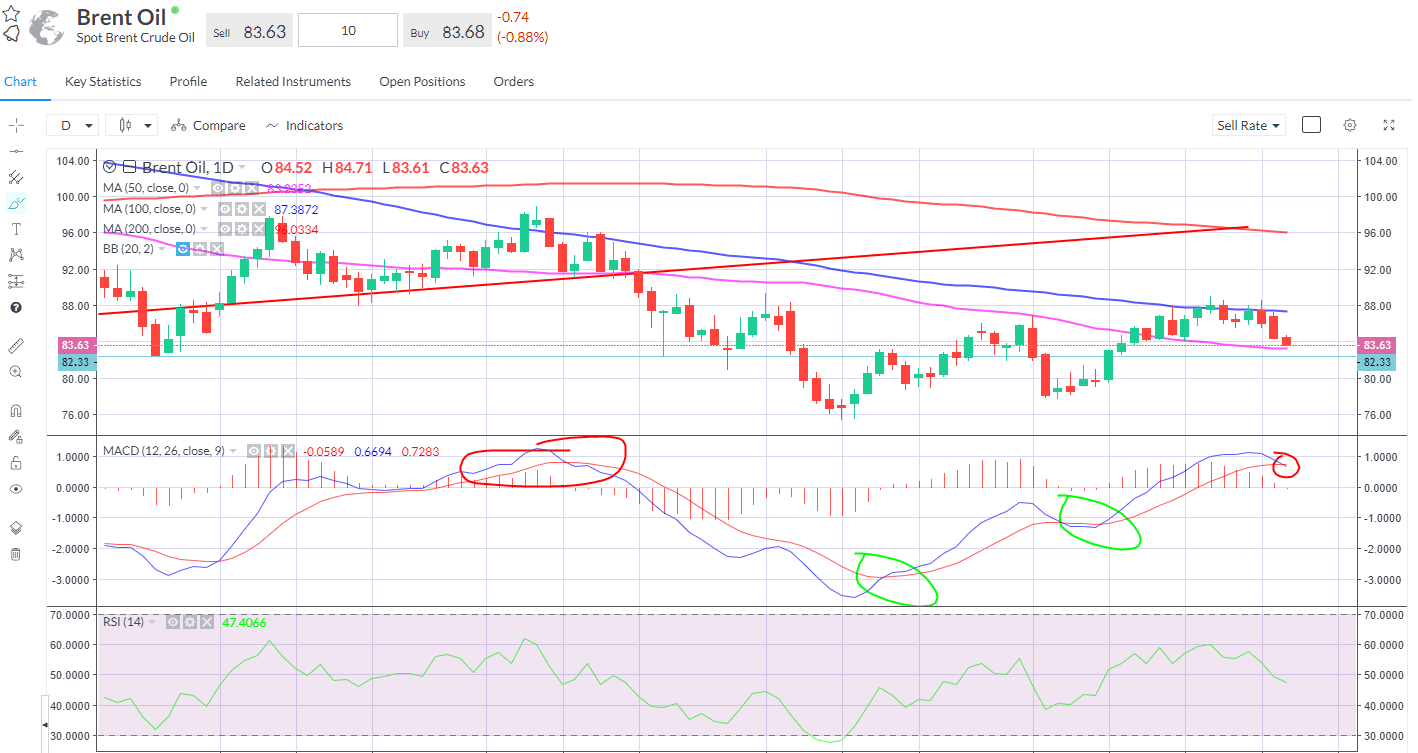
Tuesday Jan 31 2023 09:32

7 min
Some Market Jitters Ahead of Fed Meeting
Two-thirds of stocks above their 200-dma, A/D line in positive territory, year-long trend line broken -it’s all looking quite bullish but the S&P 500 fell 1.3% as investors started to show some fear ahead of the Federal Reserve meeting. There is genuine doubt among bulls here – they know the Fed can drive a horse and coaches through their recovery by pushing back strongly against the loosening in financial conditions we have seen in recent weeks.
Stocks have had a good run higher this year so some profit-taking ahead of the uncertainty of the Fed makes sense too. The Fed is seen slowing the pace of hikes to 25bps tomorrow, with the two-day meeting kick off today. Markets currently price a 98.6% chance the FOMC votes to raise rates by 25bps, and a roughly 85% chance for one last hike in March - a setup that creates ample opportunity for a hawkish surprise from the Fed. The question is how high and for how long – the market is under and sees the Fed being more dovish than it will be.
Yet, Markets End January on High Note
Scores on the doors on the last day of trading in January – FTSE 100 +4.5%, DAX +8.64%, FTSE MIB +11%, CAC +9.4%. Wall Street has also enjoyed a bounce with the Nasdaq +9% or so and the S&P 500 rising 4.6%. Meanwhile the euro is up more than 1.3% this month as the ECB has pretty well held the line on rate hikes – Thursday's meeting key. Sterling is up around 2% - Bank of England also due up on Super Thursday. Gold is up about 5% in January and copper has risen almost 9%. Oil prices have endured a stickier month as investors fret over the Fed’s hikes hitting demand in the US even as China reopens. - Brent has slipped almost 2% and WTI more than 3.5%.
We are seeing some more weakness in the major bourses this morning, with London and Frankfurt both down around 0.5%. German retail sales unexpectedly decline, whilst the French economy marginally expanded in the final quarter. Better day for Europe’s banks - UBS profits jumped as it picked up Credit Suisse clients, whilst UniCredit also delivered its best profit in a decade.
Inflatable Economy
In case you forgot, inflation is still a problem – French CPI accelerated in January, rising to 6.0% year-on-year. PPI declined to 20.7% - still huge. Just shows that if you avoid recession you just get more inflation – underlines the task facing the Fed and others in slaying the inflation dragon. Meanwhile UK food inflation rose to 16.7% according to Kantar just as the IMF downgrades the country’s growth outlook. I don’t put much faith in economic forecasts from the likes of the IMF – see below.
In FX, EURUSD nudged lower for a fourth day, touching its lowest in a week towards 1.0810. Similar picture for GBPUSD is it retreats from the December high resistance to test 1.2310. USDJPY continues to hang around the 130 area as the Japanese 10yr yield reapproaches the 0.5% ceiling – wen tested?
Central Banks Wrong on Money Growth?
The recent surge in money growth caused by excessive printing of money by central banks has resulted in missed inflation forecasts by professional economists. The Bank for International Settlements (BIS) says that looking at money growth could have improved post-pandemic inflation forecasts. There is a positive correlation between excess money growth and professional economists' misses of inflation. The authors of the BIS report also note that the upsurge in money growth preceded the inflation flare-up and countries with stronger money growth saw higher inflation. The US printed about $7 trillion in two and a half years and monetary expansion alone was not enough to generate inflation, but the direct fiscal stimulus that accompanied central bank activity made this time different from the global financial crisis. The BIS warned last year of a paradigm shift in the global inflation regime and inflation becoming entrenched, which is difficult to banish once it comes.
In the Charts Today
The FTSE index is currently trading in a narrow range without clear direction. The 100-day moving average has crossed below the 200-day moving average, indicating a bearish trend. Additionally, a bearish crossover on the MACD (Moving Average Convergence Divergence) indicator is still present, further suggesting a negative trend in the market. We can expect some uncertainty to continue for the FTSE this week with the potential for red very much on the cards still.

Last week indicated that an inability to break above the 100-day moving average would result in a retest of support at the 50-day simple moving average (SMA). The current analysis is also pointing towards a bearish trend with the MACD crossover adding further weight to the negative outlook. The Federal Reserve meeting is seen as a major factor in the market's direction, we will have to wait for comments to see where we are headed next.

